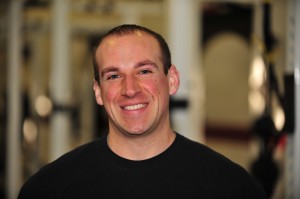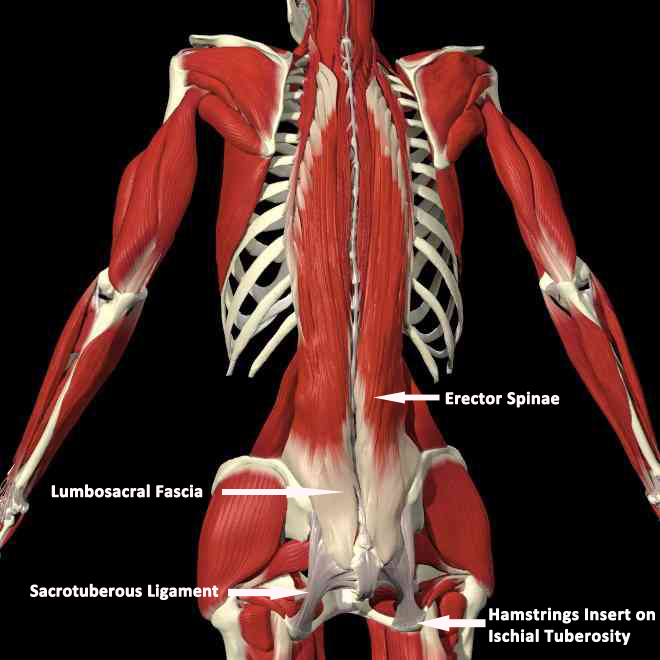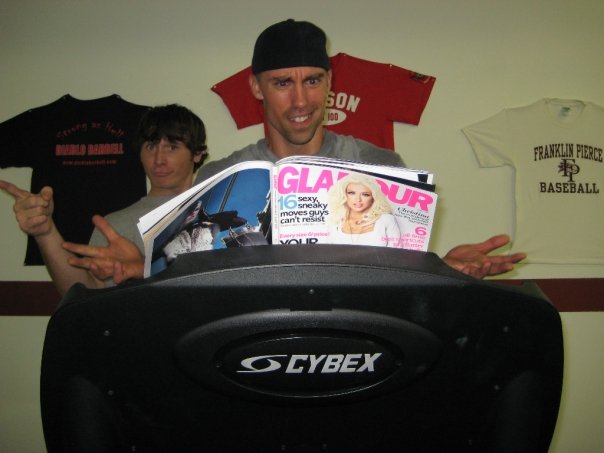Interview with Eric Cressey
These interviews are always fun to write out, because it gives me a chance to ask the kind of candid questions to people that I typically only read about in books or on on-line forums. It’s a pretty cool feeling to be able to get this going on.
Without further adieu, Eric Cressey is the co-owner and founder of Cressey Performance, an elite performance institute in Hudson, Massacheussettes, that trains pretty much every baseball player along the entire eastern seaboard. His recent program, Show and Go Training: High Performance Training To Look, Move and Feel Better, has been critically acclaimed all across the internet.
DS: You have a very busy facility that trains pretty much every baseball player in the eastern seaboard, you write a daily blog, and write for T-Nation, Men’s Health, etc, etc, etc. On top of that, you train like a demon and have a wife and puppy that need the occasional quality time. Have you found some rip in the space-time continuum or managed to clone yourself in order to get all this done?? What’s your secret for time management and productivity?
EC: I inherited my late grandfather’s love of coffee and managed to find a wife who is quite understanding (although she thinks I am a crazy workaholic as well).
Kidding aside, while I have picked up on some good time management strategies over the years, the truth is that I am still very much a work in progress. The main problem is that when things are going well, it’s tough to cut back – so instead, you keep pushing the bar higher.
When I’m tired and overworked, I usually just remind myself that this is how it’s supposed to be when you start a business. While I’ve been writing articles since I was 20, the truth is that Cressey Performance is just over three years old. Read any entrepreneurship textbook and it’ll tell you that the first five years are the most challenging and include the longest hours. Things have definitely gotten better since 2006-2007, which was undoubtedly the most hours I’ve ever worked, but I’m not ready to rest on my laurels and pat myself on the back.
As for strategies on how to get things done, loving what you do is the most important thing. If you don’t enjoy it, the hours go by very slowly.
I actually outlined a few strategies here as well.
Lastly, I’m very lucky to have an excellent staff that does an awesome job. When you have good people working all around you, time management is a lot easier – as you don’t have to waste time second-guessing everything they do.
DS: I bumped into you waiting for a sandwich at the NSCA conference in Las Vegas last year and joked about how you were easy to pick out as you and your whole crew were wearing Cressey Performance T-shirt and other paraphernalia. For trainers looking to create an image or brand and increase their exposure, what should they do besides printing off kick-ass T-shirts and setting up Facebook pages to increase their drawing power?
EC: Treat people right, overdeliver on all your promises, and focus on results. I’ve had quite a few people tell me that I’m a good marketer over the years – but they are remarkably surprised when I tell them that we haven’t spent a penny on advertising since we opened Cressey Performance. The truth is that we have grown 100% by word of mouth; our clients are our marketers.
If we make a t-shirt, it’s to give our athletes a sense of ownership in Cressey Performance and help them feel at home. If we create a Facebook page, it’s to build camaraderie among our clients, disseminate information to make their lives easier, educate them, and help connect them. If we write blogs about our athletes, it’s because we’re proud of them and want to recognize their achievements. If we write blogs about our area of focus, it’s because we feel like we have valuable information to share that can really help people.
In other words, the client experience – both in terms of enjoyment and results – is at the center of everything we do. You don’t get exposure and build a brand unless you get results and make people happy.
DS: The SI joint is a tricky bugger, it’s not the low back and it’s not technically the mobile part of the hip. What do you do with any suspected SI joint issues to get them moving and reduce pain?
EC: Well, I think that the first step is determining whether whatever is going on is clinically within my scope of practice, and if not, who the right referral is for them. Two minds are always going to be better than one in solving a problem, and there are specific interventions (e.g., manual therapy) that I can’t offer that would expedite their recovery. So, the first step is appreciating that I’d likely be working hand-in-hand with someone else to make sure that we’re covering all the important things. It’s not feasible from a time or skill-set standpoint for me to handle everything, nor would it guarantee the best outcomes (even if that individual did wind up symptom free).
That said, I think that one problem we run into nowadays with respect to this particular issue is that everyone just wants to call one-sided back pain “SI Joint Issues.” It’s almost become a “shin splint” or “impingement” garbage diagnosis that really doesn’t tell us a whole lot about how someone moves. Many of the folks we’ve seen come through our doors over the years with “SI Joint” issues have actually been those with previous soft tissue injuries in the area, or even folks with femoroacetabular impingement (FAI) that has just led to chronic spasming in the area because they couldn’t flex or internally rotate the hip sufficiently (particularly in closed chain). They don’t necessarily have SI joint issues; they just have pain on one side that happens to be somewhat near the SI joint.
The truth is that in 85% of cases, lower back pain has no definitive diagnosis. Even still, over 80% of people have disc bulges or herniations that they don’t even know are there; they’re completely asymptomatic. So, even if we could diagnosis what was structurally wrong in all the cases, we’d never know that it’s exactly what’s causing the pain. So, we have to look to movement – and here’s what I’ve most commonly seen:
1. Left AIC/Right BC patterning – If you look at the Postural Restoration Institute philosophy, they talk extensively about how many people (especially right handed individuals) are “stuck” in right stance: right hip adduction, internal rotation, and posterior rotation. Not surprisingly, you see more hip surgeries (labral repairs, sport hernia surgeries, and FAI cases) on the right side – but you also see a lot more sacral injections on that side. Get people out of right stance – even if you just yell at them every time you see them sinking back into the right hip in standing – can make a big difference. The PRI folks also have a myriad of corrective drills – from breathing patterning to muscle re-education – to bring people back to center (even if true symmetry isn’t a reality).
2. Poor Motor Control and Strength of the Glutes – We spend a lot of time on our butts – so much, in fact, that they shut down. The gluteus maximus is active in the sagittal, frontal, and transverse planes, so it’s a big player in hip stability and femoral control. If you don’t use your glutes in the sagittal plane, you’ll hyperextend at the lumbar spine as a compensation (and increase your risk of excessive anterior glide of the femoral head secondary to hamstrings dominance in hip extension). If you don’t control the femur in the transverse and frontal planes, you’ll end up in excessive adduction and internal rotation – which is “no bueno,” as I described in the previous example.
3. Poor Hip Rotation (and mobility in general) – This works hand-in-hand with the previous two factors, but warrants mention on its own. Vad et al. found that lead hip internal rotation correlated with a history of back pain in golfers, but the problem extends further than just rotational sport athletes. You need a fair amount of hip internal rotation to squat, so if you’re lacking it – yet including squatting or athletic activity that requires it – it’s not unreasonable to assume that the lumbar spine (or “SI Joint”) will get a big angry at you eventually. Likewise, if you have a structural hip issue (like the aforementioned FAI), the lower back is often the first place where people become symptomatic.
4. Poor Thoracic Spine Mobility – Charlie Weingroff made a great point that the thoracic spine is an even bigger player in the joint-by-joint approach than just about any other segment, as it interacts directly with the scapulae, rib cage (respiratory system), lumbar spine, and cervical spine. Just about everyone is stiff in the T-spine, aside from some of the pitchers I see with freaky mobility. Asymmetrical t-spine mobility is a centerpiece of the PRI philosophy in light of their heavy focus on respiratory function. The area I see this being a big player the most is in rotational sport athletes, as the thoracic spine allows for continued creation of elastic energy when hip range-of-motion is maxed out – and it’s also essential for creating a longer deceleration arc – whether we’re talking about throwing or swinging/shooting.
5. Poor Core Stability – Here’s my turn to use a garbage term, but let’s be honest: most of the 25% of Americans in low back pain at any given point are the ones who don’t do anything that even closely resembles exercise. Then they go out to shovel snow, play catch with their kids, or just put on their socks – and their backs go. They don’t need to be absolute physical specimens to get through life pain free; they just need enough stability to buttress against shear stress and create enough multi-directional stability to handle compression.
6. Soft Tissue Quality – This one is a bit of an X factor and not the answer for everyone, but I won’t lie: I have seen people with years of back pain who get immediate and lasting relief from symptoms following more aggressive soft tissue treatments like Graston and Active Release. If you use (or overuse) muscles, they can get fibrotic over time. This tends to work more commonly in a trained population than an untrained population because they’ve accumulated more wear and tear over the years. The point is simply that you can’t overlook tissue health, especially if there is a previous history of strain.
DS: What are the best supplements for the money, in your opinion?
EC: For most folks, fish oil, vitamin D, some green supplement, creatine, and a decent low-carb protein powder will get the job done. I’d add in probiotics for many people as well. The longer I’m in this field, the more of a minimalist I become.
DS: There are a lot of misconceptions and misinterpretations on core strength and core training out there. Some say you have to lay perfectly still and think happy thoughts while flexing your belly button, while other say you need to use stability balls to get anything, and other say heavy shit on your shoulders does the trick. Also, the definition of where the core is and what it does seems to be either incomplete, or somewhat lacking in common sense, as most of the anatomical diagrams will show the core as a hollow vessel, and eliminate the internal organs from the picture. What do you consider to be important in the anatomy of the core, and what would be your go-to core training exercises?
EC: I tend to fall in the camp that it encompasses just about the entire body. We can all agree that the hamstrings probably deserve a place in the role of the core, since they attach to the pelvis via the ischial tuberosity and sacrotuberous ligament, right?
Well, those same hamstrings attach below the knee on both the tibia and fibula. They share a function (knee flexion) with the gastrocnemius, clearly are in close “fascial proximity,” and have neural innervations from the same origin at the lumbar spine (sciatic nerve). The gastrocnemious attaches on the calcaneus – so we’ve established “hip to foot” relationships of the “core.”
Add latissimus dorsi to the picture. It attaches to the iliac crest, thoracolumbar fascia, thoracic spine, ribs, scapula, and humerus. That would be a “hip to arm” connection, right?
Add in the trapezius, which runs from as far down as T12 to the base of the skull, and you can argue that you’ve got a “hip to head” relationship, too.
We’ll just train it with crunches, though.
I don’t think it’s as simple as just memorizing the anatomy of the muscles surrounding the lumbar spine; it’s about understanding the complex, functional relationship among all the muscles and their tendons, the ligaments, the fascia, the nerves, and the bony structures to which they attach. Things are more complex than we try to make them – which is probably why a lot of people have chronic back pain that goes misdiagnosed and mistreated.
While much of the industry has gone to the “don’t move the lumbar spine” end of the continuum, it’s really not that black and white. It – like any other body segment – should have some movement. The problem just becomes when we add load to that movement. And, more specifically, things get dangerous when we add load to the end range of that movement. Going into full lumbar flexion with an 800-pound deadlift isn’t going to make your intervertebral discs very happy, and not controlling violent extension and rotation during an athletic movement like swinging or throwing could very well leave you with a stress fracture, oblique strain, or spondylolisthesis at some point.
That said, there should be movement during daily activities; otherwise, we wouldn’t be able to tie our shoes, and my puppy wouldn’t be able to lick his unmentionables for twenty minutes every night before he falls asleep. When we start adding resistance, crazy velocity, and high volumes to the equation, though, we change the game.
To that end, I’ll continue to train anti-rotation and anti-extension exercises in the gym because the favorable outcomes we’ve seen with this approach have been tremendous. If it ain’t broken, don’t fix it.
DS: Chewing tobacco: help or hindrance??
EC: I’m probably not the best one to ask. I dipped once as a teenager and booted a few minutes later – and then felt miserably for about four hours afterward. It wasn’t one of my finer moments.
DS: I had a client who I was training for hockey a few years ago, and he forgot to go to the washroom for what I like to call a “pre-game.” During the middle of his heavy squats, while I was spotting him, he, well for a lack of better term, he “released,” and had to go change his shorts. Any training blooper highlight moments from CP?
EC: Honestly, there are too many to list! Most of them take place when our pro baseball guys are just shooting the breeze in the office. Throw in a British golfer, pro boxer, or Ironman competitor, and you get enough people from different walks of life to make any conversation memorable and absolutely hilarious. To that end, we actually have a quote book in the office; it’s got dozens of pages of stupid things that have been said over the past three years or so.
DS: Who is the bigger prankster, you or Tony?
EC: I’m not sure that I’d say that either of us are huge pranksters, but Tony is definitely the brunt of a lot more jokes at CP. We always joke that every 2-3 months, we have a “Tony Moment” where he learns about something and is absolutely blown away to find out that we had already known about it for months.
That said, the CP jester is definitely our pitching coordinator, Matt Blake, as some of these videos show:
DS: You have a lot of people looking up to you and aspiring to hit the level of professional success that you’ve been able to attain in a relatively short period of time. Who do you look up to so that you’re continuously motivated to push and achieve more?
EC: That is a tough question to answer because my goal has never been to “be” someone else. If I was to blindly follow someone else’s steps, it wouldn’t be the career I had in mind. So, I feel like if you are going to be successful in what you do, there has to be some degree of innate motivation in you.
That said, I look to a lot of people for inspiration.
My father owns his own business and that had a more profound impact on me than you could possibly imagine as I opened my own facility. Without even knowing it, he taught me that your business problems are your own and that you never make them anyone else’s problems. And, give your employees autonomy, and as long as you’ve picked the right people, they won’t let you down.
My mother is a high school teacher and administrator – and is pretty much the Mother Teresa of my hometown. Over the years, I’ve watched on numerous occasions as she has fed some of her students who couldn’t afford to eat. I’ve gone to the grocery store with her countless times – and it always takes an extra hour or so because she runs into so many grateful parents and students she’s dealt with over the years. She established the first International Baccalaureate (IB) curriculum in the state of Maine at her school. She didn’t have to do any of this; it wasn’t mandated by her salary, and it certainly isn’t something a lot of other teachers do. She taught me that your job has to fulfill you in some way far more significant than money, and that good will never runs out.
My grandparents were married for over 60 years before my grandfather passed away this fall. They taught me that family comes first – and my wife and I have had many talks about how they educated us on how a marriage should work.
In the industry, there are quite a few people I look to for advice. Alwyn Cosgrove has taught me a ton about how to run a business. Mike Robertson has been a guy with whom I’ve collaborated a lot – and we’ve both gotten better in the process. I look to guys like Bill Hartman and Charlie Weingroff as very bright individuals who simply enjoy learning for the sake of learning – and that’s something I enjoy. Pat Rigsby is a guy who has shown me more about how to balance all of life’s demands – from family time to various business endeavors.
I could go on and on, but the point is that I draw inspiration from a lot of sources – both intrinsic and extrinsic.
DS: You’ve stated that for baseball player, olympic lifting and vertical jumping aren’t really necessary as the sport doesn’t require it. Most trainers gave you hell, but you stood your ground and proved them all wrong. What other concepts have you brought to the table that have helped re-form many common misconceptions about training and sports development?
EC: It’s funny; right after I published that piece at T-nation about how power is “plane-specific,” I got an email from a researcher who was studying the exact same thing – and finding preliminary data that completely verified what I’d said. Sometimes, research is out there to validate what we’re already doing.
Whether I’ve made people changed their thought processes or not, a few things I’ve tried to bring to the forefront are:
1. The Difference Between Inefficiency and Pathology – We’ve always been taught that if an x-ray or MRI tells us that we’re structurally out of whack, then we’re screwed. The truth is that all of us – even when we’re asymptomatic – have structural issues on diagnostic imaging. The people who are in pain are the ones who don’t move efficiently on top of these structural flaws. I see this every day with the pitching shoulders that come through my door; I assume that they’re all “broken” and that we are just managing them to avoid them hitting a painful threshold.
2. The Concept of Long-Term Athletic Development Beginning with Strength – This is an area where I’ve tried to lead by example with our training model at Cressey Performance. I’m not interested in running a group of 20 14-year-olds through a bunch of agility ladders. If we want the best long term results and safety, our #1 job in a youth population is to improve strength. Sure, they run faster, jump higher, and throw harder – but they also decelerate better and change directions more efficiently. You can run all the agility drills that you want with a young population, but the truth is that you’ll never improve speed or agility unless you teach them to put more force in to the ground. It’s like polishing the hub cabs on a car with no horsepower; you’re studying for the wrong test.
Unfortunately, there are a lot of facilities out there that are just about finding a training model that allows one to run a ton of kids through the same program without much concern for the actual benefits to be gained (or lack thereof). I’m not interested in babysitting.
3. The Differences Between Flexibility and Mobility – This was a key portion of my contribution to the recently released IYCA High School Strength Coach Certification. Mobility refers to the ability to reach certain positions, whereas flexibility refers to just one factor (joint range of motion) that affects that ability. Mobility is also dependent on stability, the foundation for which is neuromuscular recruitment. When we test flexibility, we’re talking about isolated testing of relaxed muscles/tendons. To be blunt, we’re ignoring the nervous system.
Mobility encompasses multiple joints and therefore likely involves fascial contributions to movement, whereas flexibility may only involve 1-2 joints and may therefore minimize the impact of fascia on an assessment.
Finally, and perhaps most importantly, we can easily assess mobility in a general sense – but determining the cause of limitations is more challenging. Flexibility, too, is a quick assessment – but correcting the limitation discovered doesn’t guarantee that movement quality will improve.
4. The belief that there is always something you can do to get better, regardless of injury – I’ve never been a fan of doctors and physical therapists telling injured patients to “just rest.” First off, rest alone is rarely the answer. Just as importantly, though, this recommendation ignores the fact that there are endocrine, immune, functional, psychological, and social benefits that are still to be derived from exercising. When I’m working with clients who are injured, I feel that it’s my job to show them what they can do and not just what they can’t do. And, there is always something you can do to maintain a training effect.
5. Weighted baseballs might actually be safer than traditional 5oz baseballs – and at the very least, they can be a beneficial training addition. This article sums it up quite well, so I won’t reinvent the wheel. A lot of people can’t believe it when I saw that we used weighted balls, but the results have been nothing short of fantastic.
These are just the few things that came to mind right off the top of my head. I’d like to think that there are more.






2 Responses to Interview with Eric Cressey